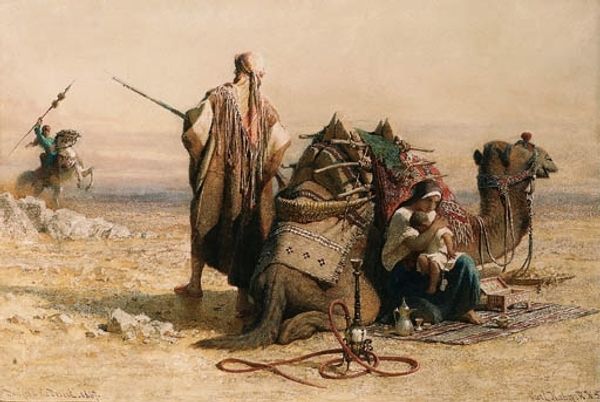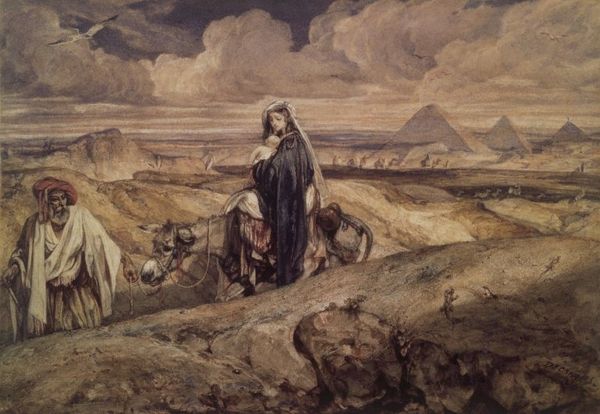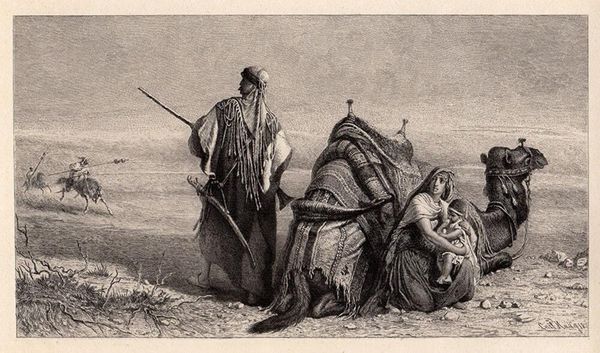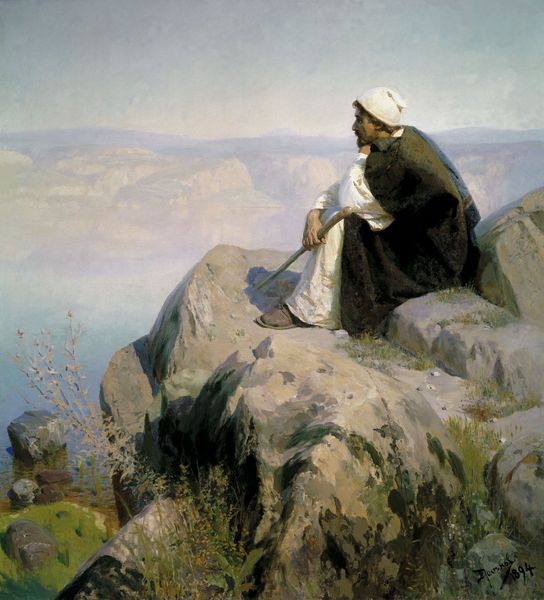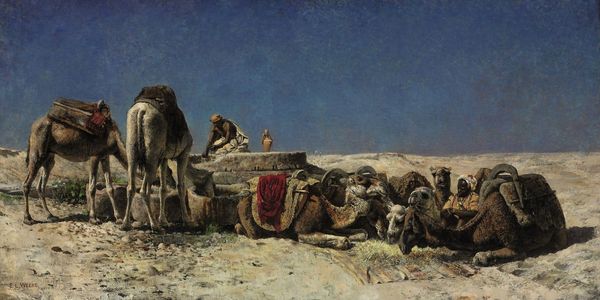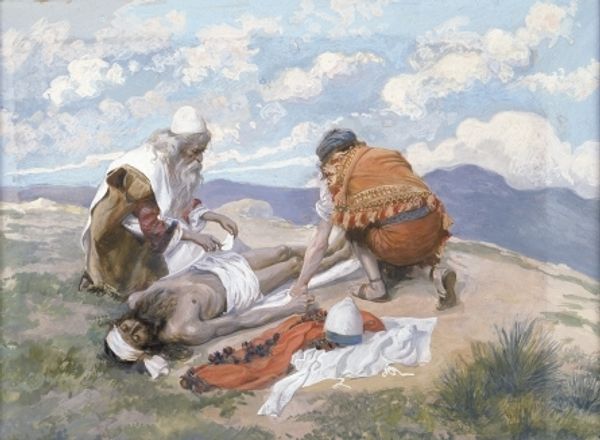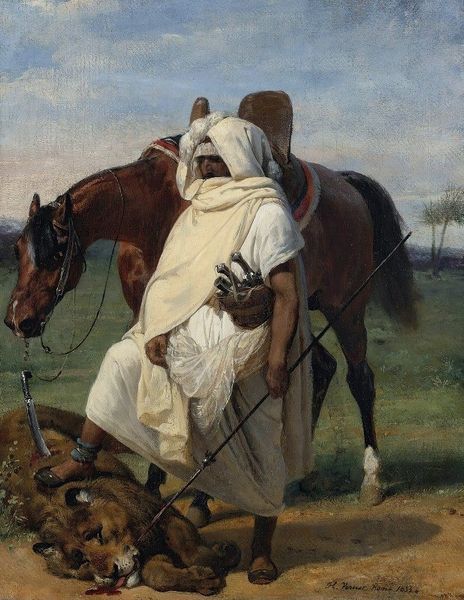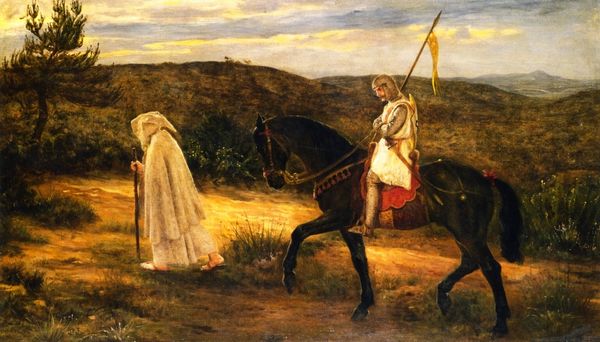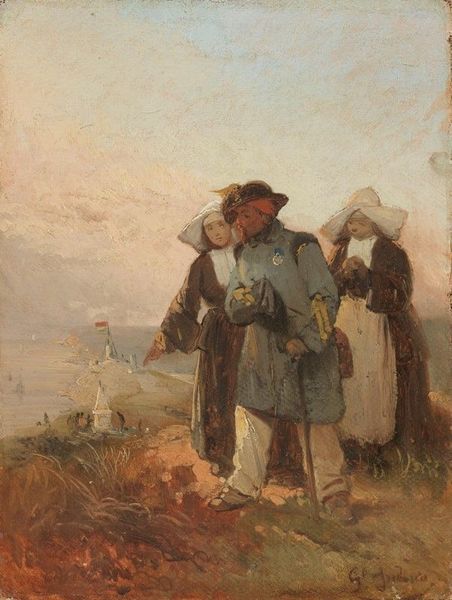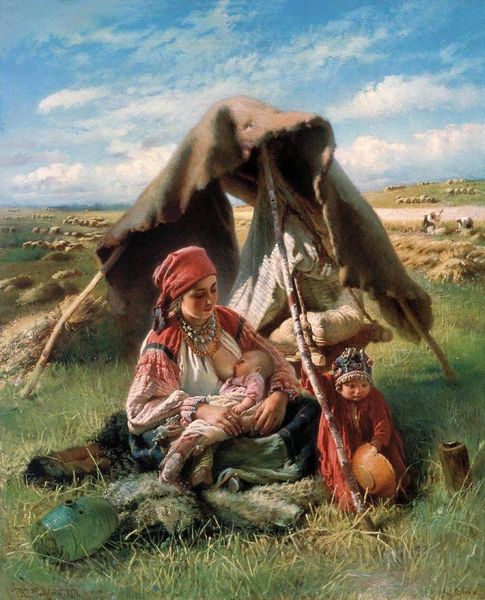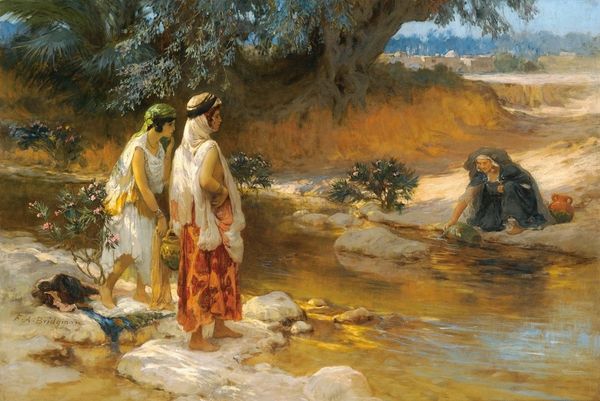
Copyright: Public domain
Curator: There’s a stillness, an unsettling calm radiating from this canvas. It's quite visceral. Editor: That's Rosa Bonheur's "Arab and a Dead Horse," created in 1852. The scene depicts precisely what the title suggests, rendered in oil paint. Considering Bonheur's identity as a woman artist, particularly in depicting animals, what perspectives can we gain by viewing this through a contemporary lens? Curator: Initially, the horse seems almost spectral, drained of life. White horses often represent purity or surrender in iconography, but here, against the ochre landscape, it becomes something more mournful, a stark reminder of mortality in a harsh environment. It certainly brings forth considerations about life, death, and their intersectional meanings. Editor: It's tempting to see the landscape itself as a character. The barrenness emphasizes the vulnerability of both the man and the horse. The Arab figure seems overcome with despair. Considering Bonheur's involvement in the Romanticism movement, it really echoes notions of emotional intensity amid vast, sublime landscapes. Curator: Absolutely. This painting becomes an interrogation of power and precarity, masculinity and fragility, echoing wider debates about orientalism in nineteenth-century art, and their intersectional complexities. The relationship with the animal—seen as subservient but also crucial—speaks volumes about resource exploitation within colonial contexts. I'm prompted to wonder, does this scene also confront ideas of the “taming” of nature, often personified as feminine? Editor: That's a striking reading. It prompts a deeper understanding of the interplay of symbol and social commentary, as Bonheur subtly yet powerfully portrays themes of loss and helplessness. This picture becomes not just about what is visually depicted, but what it culturally reveals and asks us to confront. It evokes our own symbolic readings of animal death across cultures. Curator: For me, Bonheur achieves much more than merely illustrating an orientalist encounter. Editor: Yes, by combining personal narrative, critical thought, and symbolism, this seemingly simple composition delivers a timeless story.
Comments
No comments
Be the first to comment and join the conversation on the ultimate creative platform.


